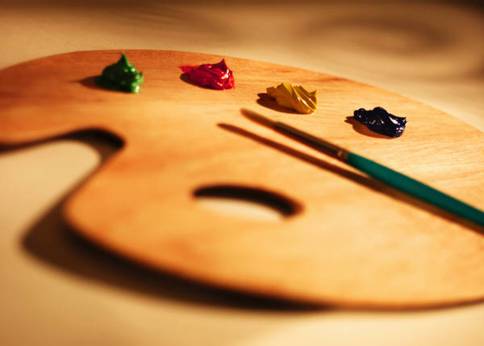Tips for Buying Students’ Art Materials
You can become an art student at school and at any age. It can be an evening hobby or a full-time education. One common factor links these situations: art supplies can be costly. So it’s important to achieve a balance between quality and economy by following Tips for Buying Students’ Art Materials

Safety with Children
If you are an art teacher and aim to start up a class for children, remember that when buying art materials, think about safety issues. If the child can’t eat it, and they always try to taste the paint, brushes and paper, then they can’t paint with it.
Watercolour Paper
When painting in watercolours, buy some good-quality watercolour paper. Do this even if you are going to use it for practice. Some examples are Winsor and Newton 140 lb CP or Arches 140 lb CP. Using ordinary paper will be a waste of time as it just becomes damp and soggy. This will not have anything to do with your technique — it’s just the paper. There are rough, hot pressed, cold pressed and soft pressed textures available as well as a wide range of weights. Remember to buy a watercolour block if you want to avoid the long process of stretching the paper.
Canvas
Primed paper can be used when working with oils and acrylics, but canvas is usually the best option. Canvas can mean cotton or linen. Cotton is easier and cheaper for students. It can be stretched easily but may stretch far too much if you are trying to paint a large picture. Linen is stronger and more resistant to decay that cotton, so your paintings will last longer. Jackson’s Art Supplies can offer all kinds of primed cotton and stretched linen canvases, depending on your budget.
Brushes
Try to buy the best type of brush you can afford. You need a brush that will hold the paint until you press it to release it on the surface. Drops, splodges, flakes and loose hairs can be frustrating and ruin a picture. There is no need to opt for the most expensive sable-hair brush if funds are tight. Synthetics or mixtures of natural hair and synthetics can perform a good job for a lower price. However, don’t opt for the cheapest model as it probably won’t last very long. Constantly replacing a poor-quality brush that wears out quickly is a nuisance.
Paints
Paint usually comes in artists’ and students’ grades. Start by buying paints from a reputable brand. This means that even if you opt for a student or budget range, the paint will still be of good quality. Some cheap paints have virtually no pigment in them. A good strategy is to start with just three colours of artist’s grade – red, yellow and blue — and learn how to work with them and what their hidden characteristics are. Add six to 12 colours from the student range until you feel more confident in your work or are earning money from it.
Coloring Pencils and Crayons
In color pencils and crayons, the pigment is present in wood or wax and it is not at all an issue. Most of the crayons constitute of paraffin, one of the petroleum products. you can also buy soy-based and beewax crayons are also available and are suitable for art.
Adhesives
Adhesive tapes, Elmer’s Glues, library paste and glue sticks are safe for students to use in arts. You can purchase both temporary and permanent varieties of glue sticks. These are good choices for using in glued surfaces. You should avoid epoxy, model glues and rubber cement as they are solvent-based.
Markers
You must select coloring pencils and not markers. This is because water-based markers generally contain alcohols which release vapors. These vapors are hazardous for health, if you inhale it. If there is no other way but to use markers, it is better that you pick the water-based ones having the “AP” symbol. In permanent markers, toxic solvents are present like xylene.
Things to Remember while Buying Art Materials for Kids
There are certain things that you must not forget while choosing art materials for the youths.
- Keeping away children from harmful art materials which usually contain a cautionary statement.
- Products bearing the warning Proposition 65 are not fit for kids.
- Art products having CP or AP symbols and the word ‘non-toxic’ indicates that they are less harmful. But this does not imply that they can be safely used by children.
- Children should not be allowed to use materials specifically designed for professional artists.
- Guide children how to use the products since most of the time, they don’t use materials as directed and so, end up experiencing a hazardous situation.
- Before handing over the art material to the kids for use, read the labels to verify the cautionary statement, ingredients and certifications. However, it is not necessary that all the ingredients will be listed.
Rightly purchasing and safely using the art materials can create art in the most effective way.


